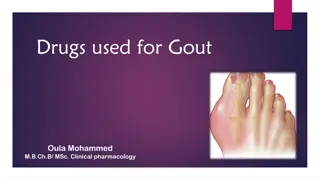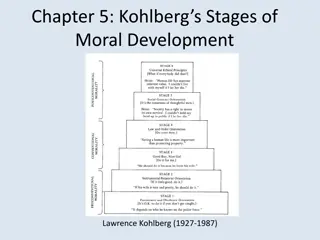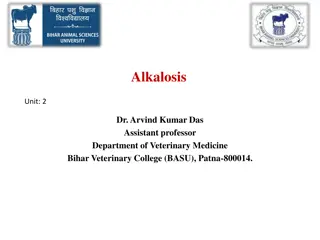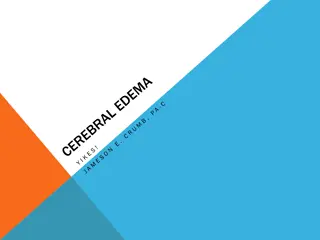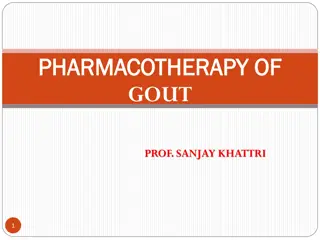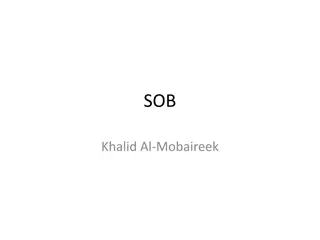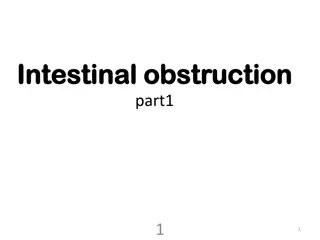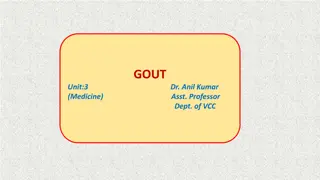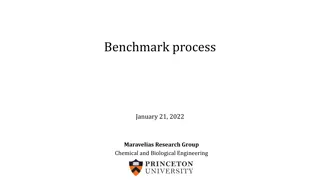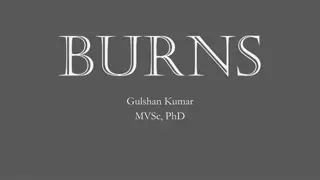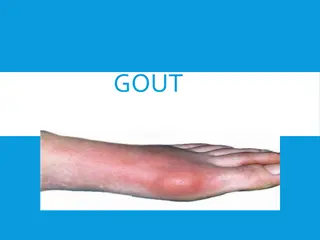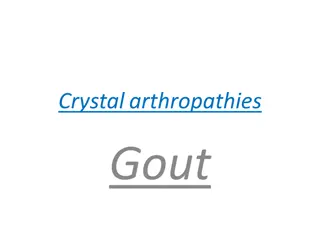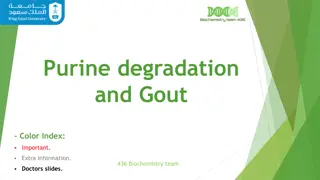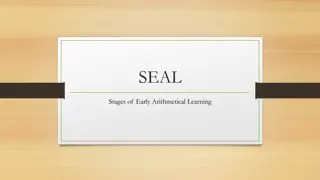Understanding Gout: Pathophysiology, Stages, and Treatment Options
Gout is characterized by acute inflammatory arthritis due to sodium urate crystal deposits. Untreated gout can lead to complications like tophi, nephrolithiasis, and joint inflammation. The disease progresses through stages: acute, asymptomatic hyperuricemia, intercritical, and chronic gout. Treatment aims to prevent complications, lower serum uric acid levels, and manage acute attacks using both drug and non-drug interventions.
Download Presentation

Please find below an Image/Link to download the presentation.
The content on the website is provided AS IS for your information and personal use only. It may not be sold, licensed, or shared on other websites without obtaining consent from the author. Download presentation by click this link. If you encounter any issues during the download, it is possible that the publisher has removed the file from their server.
E N D
Presentation Transcript
Drugs in Gout Objectives: Know the pathophysiology of Gout Outline the stages of Gout and the therapeutic objective in each stage Describe drug and non drug treatment of Gout Classify drugs used for the treatment of gout Identify the mechanism of action of drugs used for the treatment of gout Study in detail the pharmacology of drugs used for the treatment of gout Editing File Editing File Important Notes Extra
Overview of Gout Whatis Gout? Gout is usually characterized by recurrent attacks of acute inflammatory arthritis with red, tender, hot and swollen joints. It usually happens in small joints specially foot. Pathogenesis (cause) of Gout: Deposits of sodium urate crystals in articular, periarticular, and subcutaneous tissues. This is what causes the inflammatory process in Gout. Types of Gout: Gout Primary Gout Secondary Gout (Genetic) (Acquired) drugs that inhibit uric acid excretion or increase rate of cell death or another acquired disorder hereditary error of purine metabolism Untreated Gout leads to: Tophaceous: Masses of MSU (Tofi) (Monosodium Urate) in cartilages, joints, subcutaneous tissues. Nephrolithiasis: Renal stones caused by the 70% uric acid excreted by the kidney and 30% by gut elimination. Urate Nephropathy: Renal failure caused by high levels of uric acid. Joint inflammation and cardiovascular damage in advanced stages.
Continue of untreated gout: Epidemiology: Gout was historically known as "the disease of kings" or "rich man's disease." Prevalence of hyperuricemia 5% . Not all of them will develop the disease. Prevalence of gout 0.2% Male to female ratio 10:1 Pathophysiology: Urate crystals are initially phagocytosed by synoviocytes, which then release prostaglandins, lysosomal enzymes, and interleukin-1 which attract and activate polymorphonuclear leukocytes (PMN) and mononuclear phagocytes (MNP) (macrophages). This is why we use NSAIDs. Attracted by these chemotactic mediators, polymorphonuclear leukocytes and mononuclear phagocytes migrate into the joint space and amplify the ongoing inflammatory process. In the later phases of the attack, increased numbers of mononuclear phagocytes (macrophages) appear, ingest the urate crystals, and release more inflammatory mediators. Diagnosis: In most cases diagnosis of gout is based on clinical presentation, which is quite characteristic: severe pain developing within hours, tenderness, warmth, swelling and erythema, e. g. in the first metatarsophalangeal or metacarpophalangeal joint. Frequently, gout flares up following rich meals and alcohol consumption, in the middle of the night. Prof.Yeldez explained it.
Stages of Gout: Symptoms start at this stage Acute Asymptomatic hyperuricemia * Intercritical stage intermittent gout Chronic gout Complications acute Elevated serum urate with no clinical manifestation of gout Long-term gout complication inflammation in joint caused by free urate crystals The interval between acute flares Management: - Prevent complications - Lower serum uric acid Management: Prevent recurrent attacks Management: Terminate the attack Treat or not to treat? Hypertension CV Disease Stroke Renal Disease Metabolic Syndrome Asymptomatic Hyperuricemia >7mg/dl (M) >6mg/dl (F) Cause *If we found out that the patient is having Hyperuricemia during routine blood test then we have to start an early treatment at the asymptomatic stage. Treatment of Gout: Treatment of Gout Non- Pharmacologic pharmacologic Lifestyle modifications Anti- Tubulin inhibitors Uricostatic Uricosuric inflammatory - Loss of weight - Exercise Allopurinol Probenecid NSAIDs Colchicine - Diet control - Smoking cessation and avoid alcohol Febuxostat Sulfinpyrazone Steroids
Aim of Pharmacotherapy: Most therapeutic strategies for gout involve lowering the uric acid level below the saturation point (<6 mg/dL), thus preventing the deposition of urate crystals. This can be accomplished by: How those drugs work 1. interfering with uric acid synthesis with allopurinol, Febuxostat. 2. increasing uric acid excretion with probenecid or sulfinpyrazone. 3. inhibiting leukocyte entry into the affected joint with colchicine. 4. administration of NSAIDs. Anti-inflammatory and analgesic effects. Treatment of acute gout NSAIDS the most commonly used first-line treatment. Head-to-head studies show few differences between drugs.Drugs of this class are similar. Full doses of NSAID should be initiated immediately and tapered after resolution of symptoms . 1-GI ulcer 2- Bleeding or perforation. 3-Renal insufficiency leads to congestive HF 4- Heart failure. 5-Use of oral anticoagulants. increases the bleeding Recall: lecture 2 NSAIDs ASPIRIN ADRs Contrain dicated Steroids Stronger than NSAIDs Corticosteroids are a good alternative where NSAIDs and colchicine cannot be used or in refractory cases. Studies showed equal efficacy between corticosteroid and NSAIDs, with no reported side-effects with short-term use of corticosteroids. In elderly people, patients with liver or hepatic impairment, IHD (ischemic heart disease), PUD (Peptic ulcer disease), hypersensitivity to NSAIDs. Uses Intra articularly (preferred route if one or two joints affected).long use causes joint damage and increases risk of infections leading to sevre arthritis Orally. Intramuscularly or intravenously. administratio Route of n
Cont.. Colchicine VERY IMPORTANT! Alkaloid obtained from autumn crocus (flowering plant) The effect: Minimal effect on uric acid synthesis , excretion & is not analgesic Origin Binds to microtubules in neutrophils Inhibits cell division by: 1- Inhibits chemotactic factors. 2- Inhibits inflammasomes & IL-1 production. Mmechanis m Route of administration: orally. Absorption: rapidly absorbed from the GI tract. Half-life: Reaches peak plasma levels within 2 hours. Rrecycling: in the bile. Enterohepatic circulation Excretion: unchanged in the faeces or urine. Should be avoid in : patients with a creatinine clearance of less than 50 mL/min. Pharmacokinetic ! 1- Treatment of gout flares 2- Prophylaxis ( ) of gout flares in between attacks 3- Treatment of Mediterranean (inflammatory) fever with arthritis, polyserositis. Renal failure patients Clinical Uses 1- abdominal: Diarrhea(sometimes severe), Nausea, Vomiting, Abdominal cramps, Dehydration. 2- immune: Bone marrow depression. may cause hair fall like in chemotherapy 3- cardiac(in toxic doses): Cardiac toxicity, arrhythmia, Vascular collapse, Hepatotoxicity , alopecia Prevention of Recurrent attacks Side effect Summary: Allopurinol Inhibition of uric acid synthesis Prevention of recurrent Febuxostat Probenacid Uricosuric drugs (increasing uric acid execration) attack Sulfinpyrazone Mamalian Uricase (convert uric acid to a more soluble form) Acts on the uric acid its self. Pegloticase
Inhibitors of Uric acid synthesis: UAS Inhibitors Inhibit the xanthine oxidase which catalyzes its formation from xanthine and hypoxanthine. MOA Absorption 70% Protein Binding neglible 5% Hepatic metabolism, 70% converted into active metabolite (Oxypurinol) which is eliminated unchanged in the urine. P.K *Toxic epidermal necrolysis causes ulcers which leads to infections Those side effects are due to the active metabolite 1- Diarrhea, nausea, abnormal liver tests. 2- Acute attacks of gout. Fluctuation effect at the start of treatment 3- Fever, rash, toxic epidermal necrolysis*(Severe ADRS),hepatotoxicity, marrow suppression vasculitis. 4- DRESS syndrome (Drug Reaction, Eosinophilia, Systemic Symptoms). 5- 20% mortality rate. 6-Hypersensitivty. ADRS Drug Allopurinol Febuxostat Management of hyperuricemia of gout. mainly Uric acid stones or nephropathy. It is a drug of choice in patients with both gout & ischemic heart disease. Severe tophaceous deposits (uric acid deposits in tissues). Management of hyperuricemia associated with chemotherapy.(when cells are destroyed, a lot of purine is diffused) Prevention of recurrent calcium oxalate kidney stones which can cause acute renal failure Indicated for the management of hyperuricemia in patients with gout (as it reduces serum uric acid levels) . * Chemically distinct from allopurinol (non purine) . * Can be used in patients with renal disease . Oral specific xanthine oxidase inhibitor . Clinical Uses
Cont.. Route of administration: Given orally once daily. Absorption: well absorbed (85%). Metabolism: Metabolized in liver , mainly conjugated to glucouronic acid. Protein binding: 99%. Half-life: (girl s slide: 8 hours) , (boy s slide: 4-18 hours) Given to patients who do not tolerate allopurinol. Very important! Metabolism: it is metabolized by xanthine oxidase into alloxanthin which is pharmacologically active. The active metabolite inhibits the enzyme. P.K Increases number of gout attacks during the first few months of treatment. Increases level of liver enzymes. Nausea, Diarrhea. Numbness of arm or leg. Headache. The side effects are due to the active metabolite which are: Allopurinol Hypersensitivity Syndrome Toxic Epidermal Necrolysis Dress Syndrome ADRS It is required for their degradation Warfarin & dicoumarol: inhibits their metabolism (Bleeding) 6-mercaptopurine and azathioprine (anti-cancer drugs):Reduce their metabolism ampicillin : Increases frequency of skin rash Drug Interaction Uricosuric Drugs: *Increases stone formation. Mechanism of action Effect Contraindication 1-Control hyperuricemia and prevent tophus formation. 2-Increases risk of nephrolithiasis. * Some drugs reduce efficacy (e.g., aspirin). 1-patients with renal disease*. 2-History of nephrolithiasis. 3- Recent acute gout. 4-Less effective in elderly patients. Blocks tubular reabsorption of uric acid & enhances urine uric acid excretion.
Drug Probenecid Sulfinpyrazone ADRS (side effect): Exacerbation of acute attack Risk of uric acid stone GIT upset Allergic rash. Can aggravate peptic ulcer disease. Aspirin reduces efficacy of sulfinpyrazone. enhance the action of certain antidiabetic drugs.Lower blood glucose Features Probenecid inhibits Urate Transporters (URAT1) in the apical membrane of the proximal tubule It also inhibits organic acid transporter(OAT) plasma concentration of penicillin. Sulfinpyrazol inhibits URAT1 & OAT4. MOA 1-moderately effective. Effect _ Recombinant mammalian uricase: Pegloticase A uric acid specific enzyme which is a recombinant modified mammalian uricase enzyme through genetic engineering Enzymatically convert urate to allantoin, which is more soluble and readily excreted in the urine. . VERY IMPORTANT! Mechanism Clinical Used for the treatment of chronic gout in adult patients refractory to conventional therapy. Expensive therapy use peak decline in uric acid level within 24-72 hours Route of administration: IV P.K
Cont.. Infusion reactions. Fever and skin rash Anaphylaxis. Life threating Gout flare Arthralgia (arthra: joints, algia: pain) Muscle spasm. During infusion and after it Nephrolithiasis ADRS (side effect) Picture regarding the non drug treatment: We add it because Prof.Yeldez commented on it. Summary: pharmacologic Lifestyle modifications - Loss of weight - Exercise - Diet control - Smoking cessation and avoid alcohol Non NSAIDs First line treatment Contraindicated : heart failure Treatment of acute gout Treatment of gout -Stronger than NSAIDs -Uses in elderly people or hypersensitivity to NSAIDs steroids Treatment of Mediterranean (inflammatory) fever Colchicine Pharmacologic Inhibition of uric acid synthesis Allopurinol drug of choice in patients with both gout & ischemic heart disease. Febuxostate Patients with renal disease Prevention of recurrent attacks Uricosuric drugs Probenecid plasma concentration of penicillin. Sulfinpyrazone inhibits URAT1 & OAT4. Mamalian uricase Pegloticase : convert urate to allantoin
Questions MCQ: 1-Which of the following causes the inflammatory process in Gout? A-Deposits of Sodium Urate Crystals B-High serum Uric acid C-Cytokines 2-A 50 years old man came to the ER complaining from severe pain in his toes joints with hotness on them. Blood sample was taken from him and it revealed high uric acid with creatine clearance rate of 23 mL/min. Which of the following should be avoided in treating his Gout? A-NSAIDs B-Colchicine C-Febuxostat 3-Allopurinol is metabolized into Alloxanthin by A-Aspirin B-Xanthine oxidase C-Pegloticase 4-Jamal is a 35 years old man with known history of Gout was diagnosed with bacterial infection and was prescribed penicillin. Which drug of Gout his doctor must stop it in this case due to interaction ? A-Probenecid B-Febuxostat C-Steroids 5-If a Gout patient has ischemic heart disease, what is the drug of choice? A-Pegloticase B-Allopurinol C-Colchicine 1-A 4-A 2-B 3-B 5-B
Questions SAQ: Based on your study of Gout and its treatment, answer the following: A- What are the stages of Gout? Four distinct stages: a)asymptomatic hyper-uricemia b) acute intermittent gout c)Intercritical stage d) chronic gout B-How to manage each stage? Asymptotic: Life style modification Acute: terminate the attack Intercritical: Prevent the recurrent attacks Chronic: prevent complication and lower serum uric acid C-In Gout we have acute treatment and prophylactic therapy. According to the previous statement, answer the following: Write Colchicine mechanism of action and clinical uses: Slide 6 in Colchicine part. Mention one class that is used a preventive therapy with two ADRs: Any class with its ADRs
It is not hard, you just made it to the end! Team Leaders: Yazeed Al-Harbi & Aseel Ba Dukhon Thanks for those who worked on this lecture: Renad Al-Gharebi Alanoud Al-Essa Nourah Bin Hassan Alfahdah Al-Saleem References: Team436 Doctors notes and slides @Pharma4370 pharmacology437@gmail.com



